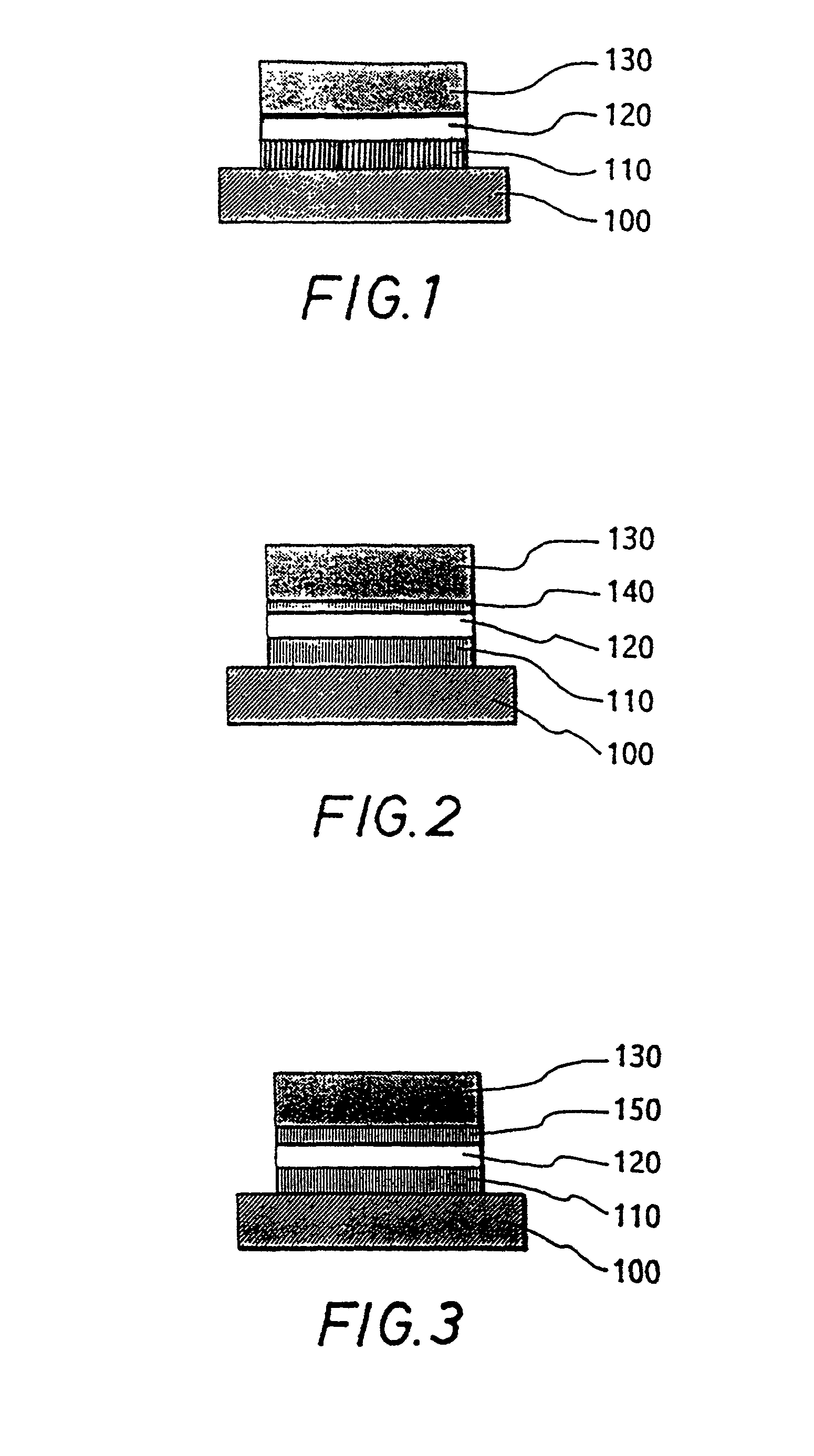Metallic undercoating for solder materials
a technology of solder materials and undercoating, which is applied in the direction of welding/cutting media/materials, soldering media, electrical equipment, etc., can solve the problems of brittle intermetallics forming with solder materials, and achieve the effect of easy production and easy wetting
- Summary
- Abstract
- Description
- Claims
- Application Information
AI Technical Summary
Benefits of technology
Problems solved by technology
Method used
Image
Examples
first embodiment
[0024] FIG. 1 shows the present invention. A substrate base 100 has arranged thereon a connection layer 110 on which a titanium diffusion barrier 120 is arranged. This titanium diffusion barrier 120 forms a metallic undercoating for a solder 130 to be applied to this titanium diffusion barrier 120.
[0025] The titanium diffusion barrier 120 offers a wettable basis for various solder materials 130. Possible solder materials include: lead alloys, silver alloys, tin alloys, gold alloys, bismuth alloys, antimony alloys, indium, and indium alloys. More specific examples include: Pb / Sn, Au / Sn, In solders, Sn / Ag, and Sn / Bi.
[0026] Possible solder application methods are mechanical and galvanic bumping, dip soldering and vapor deposition.
[0027] The metallic undercoating according to the present invention is, however, not limited to solder application methods of this type, but it is also adapted to be used for what is termed die bonding.
[0028] In the embodiment shown in FIG. 1, only one step is...
second embodiment
[0032] The second embodiment shown in FIG. 2 corresponds essentially to the embodiment according to FIG. 1. It includes, however, a metal layer 140, such as gold, which is arranged between the titanium diffusion barrier 120 and the solder material 130.
[0033] Due to the fact that titanium has a strong affinity for gold, it forms various so-called intermetallics with gold. These intermetallics are easily wettable by various solder materials.
embodiment 1
[0034] Possible solder materials have already been described on the basis of embodiment 1 in FIG. 1.
[0035] Due to the use of the metal layer 140, oxidation of the titanium diffusion barrier 120 is avoided during a production process of the metallic undercoating. The layer 140 is not limited to gold, but any other metal having a sufficient affinity for titanium is just as suitable to be used as said layer 140. These metals include: silver, silver alloys, platinum, palladium, titanium-aluminum alloys, nickel-aluminum alloys, titanium-nickel-aluminum alloys, titanium-nitrogen alloys, and titanium-niobium alloys.
[0036] The embodiment shown in FIG. 3 corresponds essentially to FIG. 2 with the exception that the titanium diffusion barrier 120 and the solder material 130 have arranged between them a metallic layer 150 instead of the metal layer 140.
[0037] Titanium forms various intermetallics with tin so that a good wettability for solder materials exists again.
[0038] During the production...
PUM
| Property | Measurement | Unit |
|---|---|---|
| semiconductor | aaaaa | aaaaa |
| affinity | aaaaa | aaaaa |
| vacuum | aaaaa | aaaaa |
Abstract
Description
Claims
Application Information
 Login to View More
Login to View More - R&D
- Intellectual Property
- Life Sciences
- Materials
- Tech Scout
- Unparalleled Data Quality
- Higher Quality Content
- 60% Fewer Hallucinations
Browse by: Latest US Patents, China's latest patents, Technical Efficacy Thesaurus, Application Domain, Technology Topic, Popular Technical Reports.
© 2025 PatSnap. All rights reserved.Legal|Privacy policy|Modern Slavery Act Transparency Statement|Sitemap|About US| Contact US: help@patsnap.com


